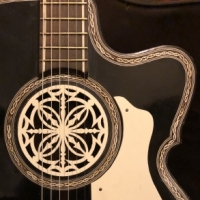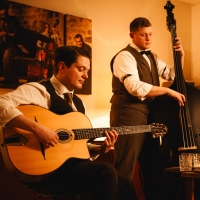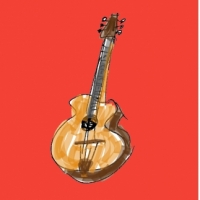DjangoBooks.com
Welcome to our Community!
Categories
- 19.8K All Categories
- 1.1K General
- 450 Welcome
- 57 Archtop Eddy's Corner
- 136 CD, DVD, and Concert Reviews
- 380 FAQ
- 26 Gypsy Jazz Italia
- 22 Photos
- 199 Gypsy Picking
- 21 Unaccompanied Django
- 15 Pearl Django Play-Along Vol.1
- 16 Gypsy Fire
- 40 Gypsy Rhythm
- 1.3K Gypsy Jazz University - Get Educated
- 126 Gypsy Jazz 101
- 210 Repertoire
- 206 History
- 696 Technique
- 46 Licks and Patterns
- 6 Daniel Givone Manouche Guitare Method Users Group
- 20 Eddie Lang Club
- 1.2K Gypsy Jazz Gear
- 745 Guitars, Strings, Picks, Amps, Pickups and Other Accessories
- 423 Classifieds
- 45 Recording
- 62 Other Instruments
- 18 Violin
- 5 Mandolin
- 22 Accordion
- 7 Bass
- 10 Woodwinds
- 314 Gypsy Jazz Events
- 136 North America
- 95 Europe
- 83 International
In this Discussion
Who's Online (0)
Sonora Gypsy Guitars - a visual model guide.
 AndyW
Glasgow Scotland UK✭✭✭ Clarinets & Saxes- Selmer, Conn, Buescher, Leblanc et.al. // Guitars: Gerome, Caponnetto, Napoli, Musicalia, Bucolo, Sanchez et. al.
AndyW
Glasgow Scotland UK✭✭✭ Clarinets & Saxes- Selmer, Conn, Buescher, Leblanc et.al. // Guitars: Gerome, Caponnetto, Napoli, Musicalia, Bucolo, Sanchez et. al.
1/
“Sonora”
A well-known name in Gypsy jazz guitar circles, though I’ve no real indication there was a factory or atelier anywhere, nor a luthier of that name.
- it was, instead, a distributor’s or wholesaler’s ,”marque au fer” - , burned or stamped into the top of otherwise un-named and un-labelled guitars, supplied by, presumably, a number of different manufacturers.
Because there are two or three different D-holes, 2 different “petit bouche” models & two different round hole models, I’m going to suggest light-hearted French nicknames as I try to differentiate the models we commonly (or uncommonly ) see in the usual places….
Tagged:













Comments
2/
Sonora
Model: “Clef”
13 or 13.5 frets
Large rounded “D” hole
Pickguard - none.
also: unlabelled/unbranded; labelled “Gaillard et Loiselet”, or “Jose Sanchez”
Treble-clef cast aluminium tailpiece
one piece or 3 piece neck.
imho, the most commonly seen “Sonora” gypsy guitar.
3/
Sonora
Model “Falcone”
pickguard is plain black, with trailing “hawk’s beak”
12 frets
oval "D"hole has one distinctive straight edge
small “Sicilian” / “resonator” style aluminium tailpiece
short scale 622mm or 630 mm
4/
Sonora
Model: “Larmes” (“Tears” )
(edit) 645 mm scale lenghth
with and without pick-guard (?)
Sound hole is medium-sized , symmetrical oval “0” shaped
distinctive teardrop(s) cutout in the flat metal tailpiece
figured back
12 frets
5/
Sonora
Model: “La Ronde”
round sound hole
pickguard: small, black, elaborately engraved (Busato style).
Tailpiece - flat brass & inset (Busato style ?).
12 frets
3 piece neck
635mm scale
Side note:
I think these next guitars with (Sicilian style) “lyre” pickguard inlays, 3 piece necks and similar flat tailpieces are closely related, if not by the same luthier/maker:-
6/
Sonora
Model: “Hono”
[this guitar previously owned and played by Hono Winterstein
- currently owned by a Djangobooks forum member]
long scale 685mm
13 fret
round hole
----
I have these pictures of a small-oval-hole Sonora with:
glued on scratchplate
three piece neck
figured back
13.5 frets
It sports a ‘tears’-model tailpiece, but it also has similarities -i.e. softer cutaway shoulder & wider ‘waist’ - to the “Hono” model… can we call it
Model: "Hono petite bouche" ??
7/
A few curiosities which may or may not be "Sonora" related:
this 13-fret guitar, reminiscent of the “clef” model, but with a smaller, oval hole:
And, finally, this masterpiece, - if we set aside the body shape and note that the headstock, neck, tailpiece, D hole shape & bindings on this “Jose Sanchez”(iirc ?), “Valencia” model are, again, reminiscent of the “clef” model:-
8/
the five best-known Sonora gypsy jazz guitar models. (guitars not to scale)
From my comment on the other post, you quite literally created the taxonomy for these guitars. Well done, my friend. Well done! 👏
Yes, 'The Clef'; the best known of the Sonora models.
Here is the one I had a few years back, note the decoration on the bridge which was probably sourced from Italy.
OK Andy – a brave man to open this can of worms, but let’s see if we can make any sense of it all.
First, the name Sonora. It seems strange that it has appeared on so many guitars yet there is little recorded about the brand either as a retailer (unlikely, we have so far found no evidence of a bricks and mortar shop) or more likely a wholesaler or distributor. They turn up mostly around the obvious European countries where we would expect, mainly France and Italy, and the clues we recognise point to mostly French manufacture with some Italian/Sicilian input.
There was a German brand called Sonora, probably one of the minor archtop makers from around Markneukirchen in the 1950s, and the name is also used on some Spanish style guitars made by Don Cortez in Mexico and on some cheap nylon strung guitars from an anonymous Chinese factory. Another amusing Sonora is this plastic one made in the USA.
https://reverb.com/au/item/43116906-sonora-plastic-guitar-727-vintage
There is also a luthier working in Arizona currently using the name Sonora for some nice hand made classical guitars; he even has the sonoraguitars.com web address.
So, back to our GJ style Sonora guitars.
We will guess for now the name was used as a brand for a distributor/wholesaler who may have supplied shops in France, possibly also Italy and where else? And from what we do recognise we can guess the brand was active in the 1940s and ‘50s but probably not any later. Pierre Fontaine did explain in an interview how the Parisian luthiers could not compete on price with the new Japanese factories for the Paul Beuscher shops from the early 1960s, maybe this is what also killed off Sonora?
Anyway, I do have a couple of contacts in France who may know more; I have sent enquiries.
With what we do know we can see ingredients from all the usual suspects if we look hard enough.
I too have filled many old guitar photos solely to gather evidence of each luthiers tricks and quirks; except the more I found, the more questions arose.
First, it seems, at least amongst the Paris based Sicilians, and possibly with their old friends back in Catania, that there was much co-operation and swapping of parts.
And second: since the 1940s, many of these guitars were working for a living and from years of wear and tear will have had parts replaced or changed.
Given those two caveats we have to allow for everything we see today as possibly not being how it was originally made.
So, to answer Andy's appropriately named Sonora models (names I agree with and fine for purposes of our research) I will list my initial comments in the same order.
The 'Clef'.
Yes, probably the most common type with the Sonora 'marque au fer' and often referred to as a Busato. I have seen no further proof of this connection but some things can become accepted as fact if it is repeated often enough. That does not make it true, and one can suspect there may have been some people just trying to add value.
The one I had, and many others look similar, I found closest to the fairly common Castelluccia Grande Bouche of the period, both in sound and construction. Note: some, including the one I have posted elsewhere, had the Italian style decorated bridge, some did not. I have seen some with the distinctive yellow button Delaruelle tuners too.
The closest clue I have to their actual maker is just the reference to the one photograph in the 'Guitares Jacobacci' book with the fictitious 'Made by Jose Sanchez for Gaillard & Loiselet' label. I had explained this story in the other 'Sonora Tailpiece' post but for anyone that missed it or to bring this thread up to date below is a photo of Antoine Di Mauro, Carmelo Catania and Vincent Jacobacci who were all friends and Giovanni Catania (son of Carmelo) confirmed Di Mauro and Jacobacci would stay with his family when they visited Sicily.
So possibly Jacobacci was making the bodies, with some necks from Di Mauro or Carmelo Catania. Assembled by who? Jacobacci, or someone else? Using bridges and tuners from various sources, French or Italian, but usually with the same cast tailpiece Andy had previously identified as made in Italy.